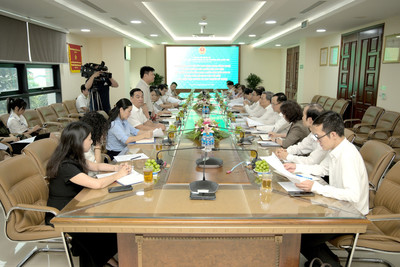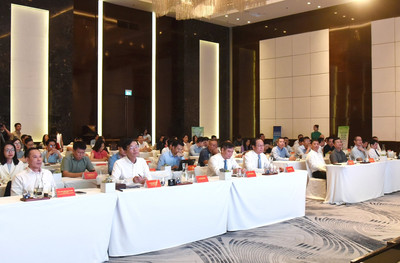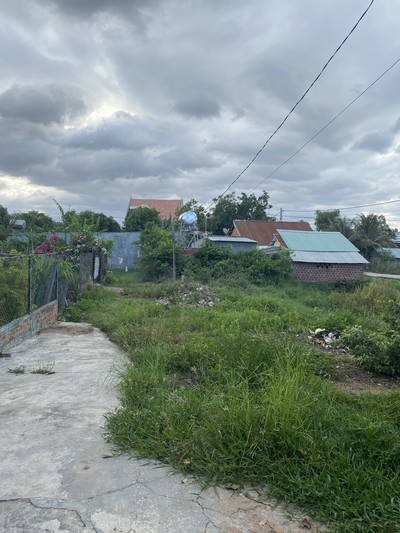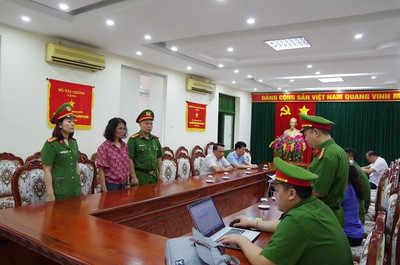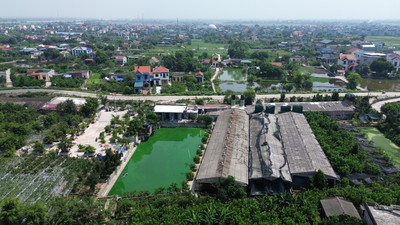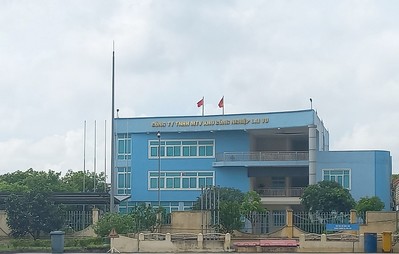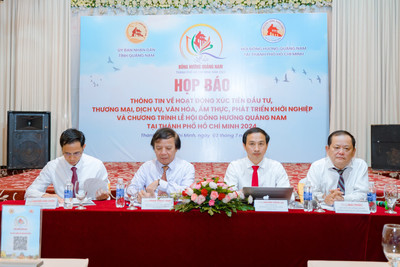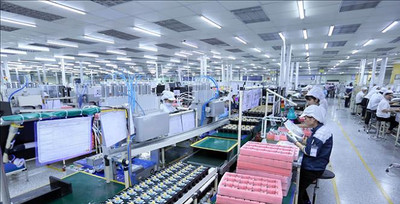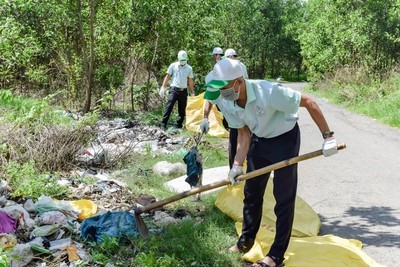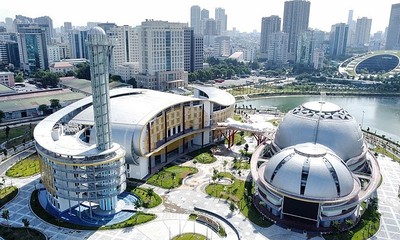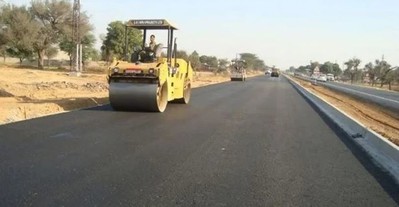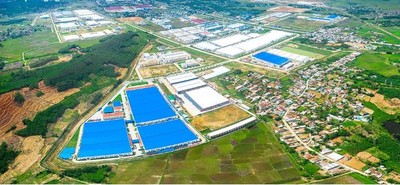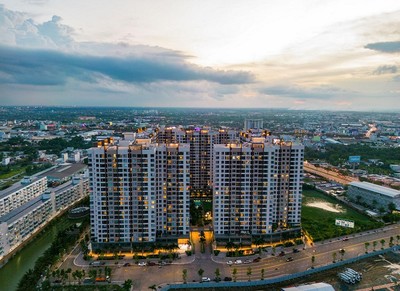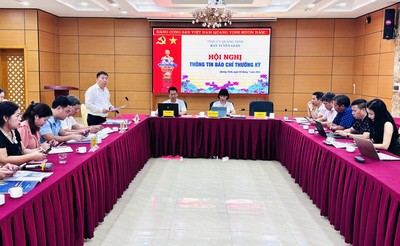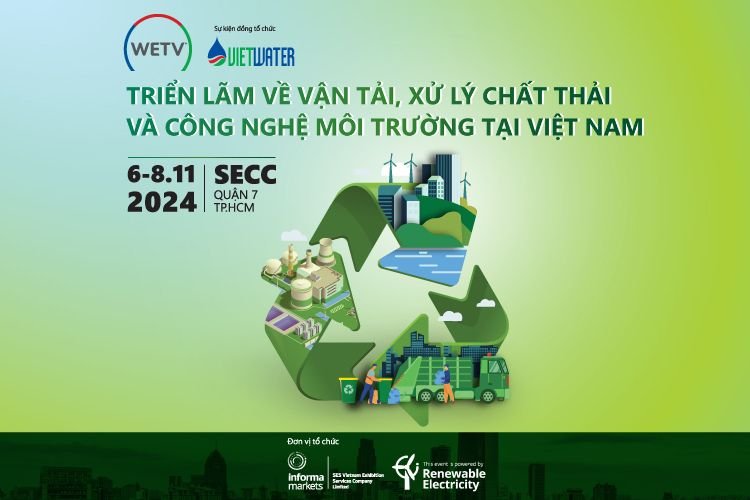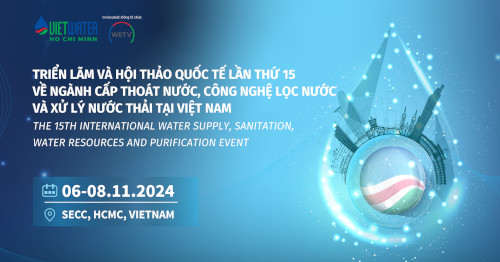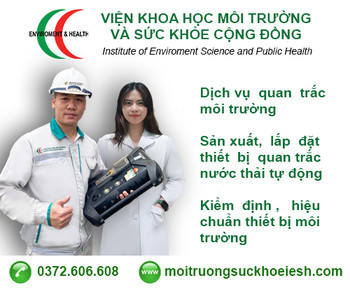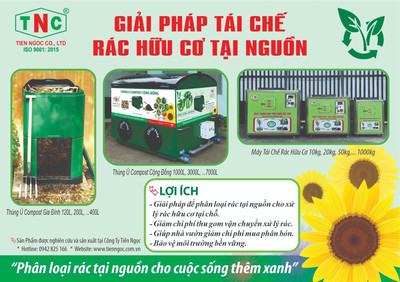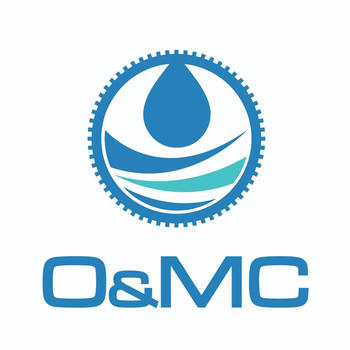Công bố quốc tế lĩnh vực môi trường số 25-2024
Ban biên tập Chuyên trang Quản lý Môi trường, Tạp chí Môi trường và Đô thị Việt Nam trân trọng giới thiệu tới quý độc giả Công bố quốc tế lĩnh vực môi trường số 25-2024.
Về quản lý môi trường
- Một cách thực tế và thiết thực để đánh giá các động lực sâu sắc hơn cho việc bảo tồn hệ sinh thái ở các nước đang phát triển - Trường hợp Vườn Quốc gia banc d’Arguin (Mauritania).
- Làm thế nào để quản lý các dịch vụ hệ sinh thái một cách hiệu quả và công bằng?
- Xây dựng sự sẵn sàng ứng phó với biến đổi khí hậu: Nghiên cứu về học tập của tổ chức trong quản lý tài nguyên thiên nhiên, vùng đông bắc Iran.
- Đánh giá tính bền vững của môi trường xây dựng có khả năng phục hồi: Nghiên cứu những thách thức và cơ hội.
- Lập hồ sơ phơi nhiễm toàn dân với các hóa chất môi trường: Một nghiên cứu trường hợp về naphthalene.
- Giải pháp dựa vào thiên nhiên giúp tăng cường khả năng chống chọi với lũ lụt và mang lại nhiều lợi ích cho các thành phố ven biển ở Nam bán cầu.
- Hạt vi nhựa lơ lửng trong bụi từ các môi trường trong nhà khác nhau ở Barranquilla, Colombia: Các hạt vi mô chiếm ưu thế?
- Định lượng tác động của cháy rừng ở Canada đối với mạng lưới ô nhiễm không khí trong khu vực.
- Các loại nguồn chính có tiềm năng oxy hóa PM2.5 ở Bắc Kinh và khu vực xung quanh vào mùa đông dựa trên các phép đo thực địa dựa trên dithiothreitol trực tuyến.
Về môi trường đô thị
- Khám phá mối quan hệ động lực giữa lượng khí thải carbon và chất lượng môi trường sinh thái ở Khu vực đô thị Samarinda: Cách tiếp cận không gian và thời gian.
- Hạt vi nhựa lơ lửng trong bụi từ các môi trường trong nhà khác nhau ở Barranquilla, Colombia: Các hạt vi mô chiếm ưu thế?
- Các hạt nhựa trong phân trộn đô thị và sự phân bố kích thước hạt của chúng.
- Phân tích so sánh vi mô trong vùng nước đô thị sử dụng μ-FTIR và Py-GC-MS: Một nghiên cứu điển hình ở Amsterdam.
- Nồng độ carbon monoxide (CO) trong hộ gia đình ở một thành phố lớn ở châu Phi: Gánh nặng sức khỏe cộng đồng không thể xác định được?
- Người trôi dạt trong lũ lụt đô thị (UFD): Bắt đầu chuyển động.
- Nồng độ carbon monoxide (CO) trong hộ gia đình ở một thành phố lớn ở châu Phi: Gánh nặng sức khỏe cộng đồng không thể xác định được?
- Lũ lụt ở các khu đô thị bán phi chính thức ở Bắc Phi: Các yếu tố môi trường và tâm lý xã hội.
- Cải thiện khả năng thấm và giữ nước mưa trong đất đô thị được nén chặt ở các bề mặt không thấm nước/thấm nước bằng than sinh học.
Về môi trường khu công nghiệp
- Tăng cường phân tách điện tích thông qua Ce2S3 trên nanocompozit hai lớp lõi ZnO–Ce2S3–MnO2 của sơ đồ Z kép để phân hủy các chất ô nhiễm thuốc nhuộm đa dạng.
- Hiệu suất vượt trội của các hạt nano giàu Fe@carbon được điều chế thông qua quá trình cacbon hóa thủy nhiệt chất thải của nhà máy dầu để loại bỏ H2S.
- Cấu trúc hợp lý vật liệu 2D & 3D trên vi cầu h-BN @SnO2/TiO2 cho phép khử chất xơ quang xúc tác của thuốc nhuộm vải trong xử lý nước thải.
- Xu hướng khử mùa của ozone tầng mặt và tiền thân của nó ở thành phố công nghiệp Cao Hùng, Đài Loan.
- Tổng hợp composite than sinh học từ tính sử dụng quả Vateria indica thông qua quá trình hydro-cacbon hóa một nồi tại chỗ để phân hủy thuốc nhuộm xúc tác giống Fenton.
- Hệ số phát thải và hồ sơ nguồn của các hợp chất hữu cơ dễ bay hơi từ ngành sản xuất ô tô.
- Quá trình khử nitơ monoxit có xúc tác sử dụng chất mang oxy sắt-niken có nguồn gốc từ bùn mạ điện: Phương pháp mới để hợp tác giảm phát thải các khí ô nhiễm.
- Lộ trình tái phân bổ yếu tố để chuyển đổi carbon thấp: Góc nhìn về hệ sinh thái ngành sản xuất.
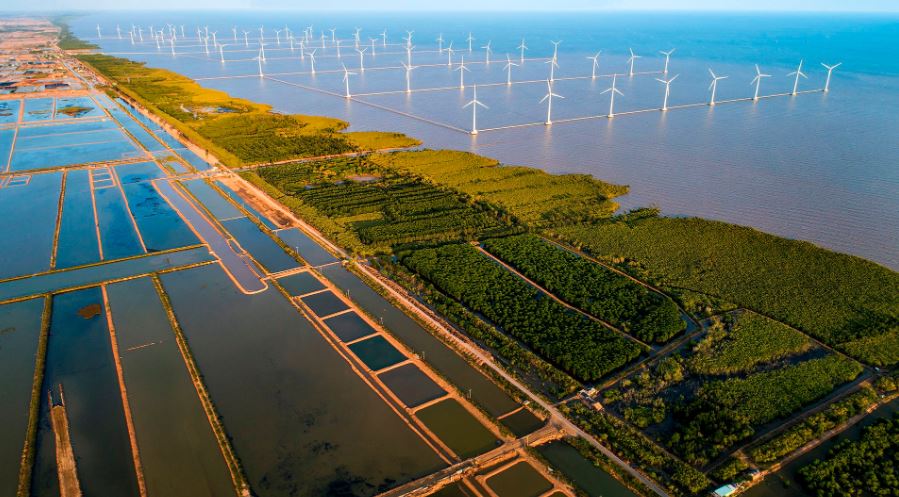
CHUYÊN TRANG QUẢN LÝ MÔI TRƯỜNG
Tạp chí Môi trường và Đô thị Việt Nam
Xin trân trọng giới thiệu!
ENVIRONMENTAL MANAGEMENT / QUẢN LÝ MÔI TRƯỜNG
1. A practical and pragmatic way to assess deeper motivations for ecosystems preservation in developing country – The case of banc d’Arguin National Park (Mauritania)
Environmental Development, Volume 50, June 2024, 100983
Abstract
The core of this paper is an evaluation of the willingness to pay for non-use values of the ecosystem services related to the Banc d'Arguin National Park in Mauritania. This coastal protected area, the largest in Africa, has existed for more than forty years and plays a major role in the conservation of biodiversity. We use contingent valuation to estimate the willingness to pay by Mauritanian populations for the protection of biodiversity in the park. Results show that the non-use value accounts for 12–29% of the total economic value attributed to the park's ecosystem services. Interestingly, a correlation exists between the familiarity with the park and the living conditions of people interviewed and their willingness to pay: rural and distant populations have a lower willingness to pay than closer or urban population. The results also highlight that the protection of biodiversity is compatible with the maintenance of the Imraguen way of life since their fishing practices are based on traditional sustainable catch techniques.
2. How to manage the ecosystem services effectively and fairly?
Journal of Cleaner Production, Volume 458, 15 June 2024, 142477
Abstract
Ecosystem services (ES) are the bridge between social system and ecosystem, and effective management of ecosystem services is the basis of sustainable development. According to the objectives of ecosystem service management, this study constructed an ecosystem service management framework based on trade-off theory, and proposed the "Driving force regulation” toolkit and "Compensation scheme construction” toolkit to try to improve the efficiency and fairness of ecosystem service management. And take Zhejiang Huzhou Mulberry-dyke & Fish-pond System (MDFP) as the practical object of the framework. The results showed that: (1) When the thickness of the pond sludge is 10 cm, increasing the frequency of covering pond sludge to mulberry-dyke (CSMD) can effectively improve the supply of soil nutrient retention services in MDFP, but it will reduce the provision services. (2) When the pond sludge thickness is 10 cm, the frequency of CSMD is the driving force of the supply-supply trade-offs between soil nutrient retention services and provision services. Increasing the frequency of CSMD to once a year can effectively manage trade-offs between ES supplies and thereby improve stakeholders’ group benefits. (3) The benefits obtained by various stakeholders from the management of ES supply-supply trade-offs are uneven. Entrepreneurs, environmentalists and tourists need to pay compensation in the ratio of 6:6:1, while farmers and government agencies receive compensation in the ratio of 3:2. This research shows that the ecosystem service management framework based on trade-off theory optimizes ES supply according to the ES preferences of stakeholders, and determines the proportion of compensation paid (received) by private winners (private losers) based on differences in changes of individual benefits, thereby effectively improving the "efficiency” and "fairness” of ES management.
3. Building readiness for climate change: A study of organizational learning in the management of natural resources, northeastern Iran
Environmental Development, Volume 50, June 2024, 100994
Abstract
Readiness is critical to adaptation to climate change and includes how organizations adjust their structures, processes, and policies for both mitigation and adaptation. Organizational learning regarding climate change is the process by which organizations and institutions acquire the knowledge, skills, and capabilities necessary to understand, manage, and adapt to the impacts of climate change. This process emphasizes continuous learning, innovation, and collaboration as key strategies for effectively responding to the ongoing climate crisis. The aim of this study was to investigate the current state of organizational learning related to climate change among the General Directorates of Natural Resources and Watershed Management in Golestan and North Khorasan provinces of Iran.
The research was conducted using a survey method, through which 80 experts from two organizations were randomly selected to complete a structured questionnaire. The findings revealed that although employees have a strong attitude towards climate change, organizational learning related to climate change is weak. The five dimensions of organizational learning (knowledge acquisition, information distribution, information interpretation, organizational memory, information application) were assessed. Information interpretation had the most weight, while organizational memory had the least. Positive attitudes toward climate change were associated with increased engagement in climate change-related organizational learning. The study recommends implementing training and awareness initiatives, fostering knowledge sharing and retention, encouraging positive attitudes towards climate change, and promoting collaboration to enhance organizational learning as a prerequisite for organizational readiness to climate change.
4. Assessing the sustainability of a resilient built environment: Research challenges and opportunities
Journal of Cleaner Production, Volume 458, 15 June 2024, 142437
Abstract
Natural hazards foster the need for resilience in the built environment, but resilient structures must not interfere with sustainability. The potential trade-offs are increasingly being investigated using performance-based assessments combined with life cycle assessments (LCA) to translate probable building or bridge damage into environmental losses. Leveraging 102 publications intersecting sustainability and resilience in the built environment, this review sheds light on the current methodological challenges and opportunities for integrating natural hazard-induced damage with environmental losses in the built environment.
The reviewed literature primarily focused on buildings exposed to seismic hazards, deriving their losses using the best-known LCA mode, attributional LCA. Building and bridge frameworks showed notable methodological distinctions, along with a near absence of consideration of the interactions between climate change and natural hazards or structural vulnerabilities. Based on the findings, 22 opportunities for future research were synthesized. Future research should seek to better assess the total life cycle sustainability of resilient structures by exploring advanced modes of LCA, widening the scope of their assessments, and better integrating uncertainty and sensitivity. Achieving a more sustainable and resilient built environment also requires upcoming research to investigate the practicalities of aligning modeling frameworks, tools, data, and case studies. Addressing these research gaps will assist in anticipating how the built environment can be adapted and shaped to positively contribute to a resilient and sustainable future.
5. Spatial-temporal differentiation and influencing factors of carbon emission trajectory in Chinese cities - A case study of 247 prefecture-level cities
Science of The Total Environment, Volume 928, 10 June 2024, 172325
Abstract
Cities, where human energy activities and greenhouse gas emissions are concentrated, contribute significantly to alleviating the impacts of global climate change. Utilizing the China Carbon Emissions Accounting Database (CEADs) to provide carbon dioxide emission inventories for urban areas in China at the prefecture level, this study closely examines the historical evolution trajectories of carbon emissions across 247 urban units from 2005 to 2019. The logarithmic cubic function model was employed to simulate these trajectories, evaluating urban emission peaks and classifying the different carbon emission trajectories. Further, the Geographical and Temporal Weighted Regression model was employed to explore spatiotemporal traits and essential variables that impact the variations in carbon emissions among four identified trajectory types.
Our results showed that Chinese urban carbon emission trajectories can be classified into four categories: a) peaking emissions, b) fluctuating growth, c) continuous growth, and d) passive decline. Specifically, 43 cities, primarily in North China, proactively attained their emission peak post-2010, driven by the reduction in secondary industry and energy intensity. 90 cities, largely industrial hubs in the southeast coast and inland, reached an emission plateau around 2015, exhibiting fluctuating growth due to dependencies on secondary industries. 101 cities, predominantly located in western and central regions, demonstrated a clear upward trend in carbon emissions, propelled by rapid urbanization and heavy industry-oriented economic development. Lastly, 13 cities, typically in the northeastern and southwestern regions, experienced a passive decline in carbon emissions, attributable to resource depletion or economic downturns. It is evident that China's city-level carbon peaking has demonstrated some effectiveness, yet considerable progress is still required.
6. Profiling population-wide exposure to environmental chemicals: A case study of naphthalene
Chemosphere, Volume 358, June 2024, 142217
Abstract
Long-term exposure to environmental chemicals can detrimentally impact human health, and understanding the relationship between age distribution and levels of external and internal exposure is crucial. Nonetheless, existing methods for assessing population-wide exposure across age groups are limited. To bridge this research gap, we introduced a modeling approach designed to assess both chronic external and internal exposure to chemicals at the population level. The external and internal exposure assessments were quantified in terms of the average daily dose (ADD) and steady-state blood concentration of the environmental chemical, respectively, which were categorized by age and gender groups. The modeling process was presented within a spreadsheet framework, affording users the capability to execute population-wide exposure analyses across a spectrum of chemicals. Our simulation outcomes underscored a salient trend: younger age groups, particularly infants and children, exhibited markedly higher ADD values and blood concentrations of environmental chemicals compared to their older counterparts.
This observation is due to the elevated basal metabolic rate per unit of body weight characteristic of younger individuals, coupled with their diminished biotransformation kinetics of xenobiotics within their livers. These factors collectively contribute to increased intake rates of environmental chemicals per unit of body weight through air and food consumption, along with heightened bioaccumulation of these chemicals within their bodies (e.g., blood). Furthermore, we augmented the precision of the external and internal exposure assessment by incorporating the age distribution across the population. The simulation outcomes unveiled that, to estimate the central tendency of the population's exposure levels, employing the baseline value group (age group 21–30) or the surrogate age of 25 serves as a simple yet dependable approach. However, for comprehensive population protection, our recommendation aligns with conducting exposure assessments for the younger age groups (age group 0–11). Future studies should integrate individual-level exposure assessment, analyze vulnerable population groups, and refine population structures within our developed model.
7. Nature-based solution enhances resilience to flooding and catalyzes multi-benefits in coastal cities in the Global South
Science of The Total Environment, Volume 928, 10 June 2024, 172282
Abstract
Coastal cities are facing a rise in groundwater levels induced by sea level rise, further triggering saturation excess flooding where groundwater levels reach the topographic surface or reduce the storage capacity of the soil, thus stressing the existing infrastructure. Lowering groundwater levels is a priority for sustaining the long-term livelihood of coastal cities. In the absence of studies assessing the possibility of using tree-planting as a measure of alleviating saturation excess flooding in the context of rising groundwater levels, the multi-benefit nature of tree-planting programs as sustainable Nature-based solutions (NBSs) in coastal cities in the Global South is discussed. In environments where groundwater is shallow, trees uptake groundwater or reduce groundwater recharge, thereby contributing to lower groundwater levels and increasing the unsaturated zone thickness, further reducing the risk of saturation excess flooding.
Tree-planting programs represent long-term solutions sustained by environmental factors that are complementary to conventional engineering solutions. The multi-benefit nature of such NBSs and the expected positive environmental, economic, and social outcomes make them particularly promising. Wide social acceptance was identified as crucial for the long-term success of any tree-planting program, as the social factor plays a major role in addressing most weaknesses and threats of the solution. In the case of Nouakchott City (Mauritania), where a rise in groundwater levels has led to permanent saturation excess flooding, a tree-planting program has the potential to lower the groundwater levels, thereby reducing flooding during the rainy season.
8. Microplastics suspended in dust from different indoor environments in Barranquilla, Colombia: Predominant microparticles?
Environmental Pollution, Volume 350, 1 June 2024, 124023
Abstract
Considering that microplastics (MPs) are classified as ubiquitous pollutants, that air quality affects human health, and that people remain indoors most of the time, the need has arisen to evaluate the exposure to MPs within the suspended dust in indoor environments. With this objective, the present study carried out passive sampling to analyze the precipitation of microparticles in some indoor residential environments (2 apartments) and workplaces (an office, a pastry shop, a gift shop, and a paint shop) in Barranquilla, Colombia. The quantification and physical characterization of microparticles were carried out under a stereomicroscope, and the chemical characterization was carried out by infrared microspectroscopy (μFTIR).
The highest average concentration of MPs in the apartments was found in the air-conditioned rooms (1.1 × 104 MP/m2/day), and concerning the workplaces, the gift shop and the paint shop were the spaces with a higher proportion of MPs (6.0–6.1 × 103 MP/m2/day), with polyesters being the main synthetic polymers, but being semi-synthetic particles the predominant among the samples. Regarding its morphology, fibers were the most abundant shape (>90%), grouping mainly in the 1000–5000 μm range, while the few fragments found were mostly grouped below 50 μm. Exposure by inhalation of MPs in adults was estimated between 1.7 × 102–1.6 × 103 MP/kg/day, while by ingestion it ranged between 2.7 × 102–2.4 × 103 MPs/kg/day. On the other hand, within our research, a significant presence of non-plastic microparticles was found, which reached up to 69% in analyzed samples, corresponding mainly to cotton and cellulose, so we suggest that these should also be included in future studies that aim to estimate potential health implications from exposure to suspended micropollutants.
9. Quantifying the impacts of Canadian wildfires on regional air pollution networks
Science of The Total Environment, Volume 928, 10 June 2024, 172461
Abstract
Wildfire smoke greatly impacts regional atmospheric systems, causing changes in the behavior of pollution. However, the impacts of wildfire smoke on pollution behavior are not easily quantifiable due to the complex nature of atmospheric systems. Air pollution correlation networks have been used to quantify air pollution behavior during ambient conditions. However, it is unknown how extreme pollution events impact these networks. Therefore, we propose a multidimensional air pollution correlation network framework to quantify the impacts of wildfires on air pollution behavior. The impacts are quantified by comparing two time periods, one during the 2023 Canadian wildfires and one during normal conditions with two complex network types for each period. In this study, the value network represents PM2.5 concentrations and the rate network represents the rate of change of PM2.5 concentrations.
Wildfires' impacts on air pollution behavior are captured by structural changes in the networks. The wildfires caused a discontinuous phase transition during percolation in both network types which represents non-random organization of the most significant spatiotemporal correlations. Additionally, wildfires caused changes to the connectivity of stations leading to more interconnected networks with different influential stations. During the wildfire period, highly polluted areas are more likely to form connections in the network, quantified by an 86 % and 19 % increase in the connectivity of the value and rate networks respectively compared to the normal period. In this study, we create novel understandings of the impacts of wildfires on air pollution correlation networks, show how our method can create important insights into air pollution patterns, and discuss potential applications of our methodologies. This study aims to enhance capabilities for wildfire smoke exposure mitigation and response strategies.
10. Remote sensing estimation of regional PM2.5 based on GTWR model -A case study of southwest China
Environmental Pollution, Volume 351, 15 June 2024, 124057
Abstract
Air pollution in China has becoming increasingly serious in recent years with frequent incidents of smog. Parts of southwest China still experience high incidents of smog, with PM2.5 (particulate matter with diameter ≤2.5 μm) being the main contributor. Establishing the spatial distribution of PM2.5 in Southwest China is important for safeguarding regional human health, environmental quality, and economic development.
This study used remote sensing (RS) and geographical information system (GIS) technologies and aerosol optical depth (AOD), digital elevation model (DEM), normalized difference vegetation index (NDVI), population density, and meteorological data from January to December 2018 for southwest China. PM2.5 concentrations were estimated using ordinary least squares regression (OLS), geographic weighted regression (GWR) and geographically and temporally weighted regression (GTWR). The results showed that: (1) Eight influencing factors showed different correlations to PM2.5 concentrations. However, the R2 values of the correlations all exceeded 0.3, indicating a moderate degree of correlation or more; (2) The correlation R2 values between the measured and remote sensed estimated PM2.5 data by OLS, GWR, and GTWR were 0.554, 0.713, and 0.801, respectively; (3) In general, the spatial distribution of PM2.5 in southwest of China decreases from the Northeast to Northwest, with moderate concentrations in the Southeast and Southwest; (4) The seasonal average PM2.5 concentration is high in winter, low in summer, and moderate in spring and autumn, whereas the monthly average shows a "V” -shaped oscillation change.
11. Major source categories of PM2.5 oxidative potential in wintertime Beijing and surroundings based on online dithiothreitol-based field measurements
Science of The Total Environment, Volume 928, 10 June 2024, 172345
Abstract
Fine particulate matter (PM2.5) causes millions of premature deaths each year worldwide. Oxidative potential (OP) has been proposed as a better metric for aerosol health effects than PM2.5 mass concentration alone. In this study, we report for the first time online measurements of PM2.5 OP in wintertime Beijing and surroundings based on a dithiothreitol (DTT) assay. These measurements were combined with co-located PM chemical composition measurements to identify the main source categories of aerosol OP. In addition, we highlight the influence of two distinct pollution events on aerosol OP (spring festival celebrations including fireworks and a severe regional dust storm). Source apportionment coupled with multilinear regression revealed that primary PM and oxygenated organic aerosol (OOA) were both important sources of OP, accounting for 41 ± 12 % and 39 ± 10 % of the OPvDTT (OP normalized by the sampled air volume), respectively.
The small remainder was attributed to fireworks and dust, mainly resulting from the two distinct pollution events. During the 3.5-day spring festival period, OPvDTT spiked to 4.9 nmol min−1 m−3 with slightly more contribution from OOA (42 ± 11 %) and less from primary PM (31 ± 15 %). During the dust storm, hourly-averaged PM2.5 peaked at a very high value of 548 μg m−3 due to the dominant presence of dust-laden particles (88 % of total PM2.5). In contrast, only mildly elevated OPvDTT values (up to 1.5 nmol min−1 m−3) were observed during this dust event. This observation indicates that variations in OPvDTT cannot be fully explained using PM2.5 alone; one must also consider the chemical composition of PM2.5 when studying aerosol health effects. Our study highlights the need for continued pollution control strategies to reduce primary PM emissions, and more in-depth investigations into the source origins of OOA, to minimize the health risks associated with PM exposure in Beijing.
12. Examining nonlinear effects of socioecological drivers on urban solar energy development in China using machine learning and high-dimensional data
Journal of Environmental Management, Volume 360, June 2024, 121092
Abstract
In the context of carbon neutrality target, renewable energy sources have been transforming from "supplementary energy” to "main energy”, which have promoted the green and low-carbon transition of global energy supply system. In-depth analyzing the spatial patterns and driving mechanisms of renewable energy expansion are of significance for optimizing the spatial layout of clean power, and avoiding the phenomenon of wind and solar power curtailment. In this paper, we proposed an ensemble learning model to examine the nonlinear effects of physical geography, resource endowment, and socio-economic factors on solar photovoltaic (PV) capacity at the prefecture-level city scale in China. Using the city-level multi-sources geospatial big data, we extensively collected a total of 175 related explanatory variables and cumulative installed capacity of solar PV power for 295 prefecture-level cities of China. The recursive feature elimination algorithm (SVM-REF) is firstly used to extract the optimal feature subset of urban PV capacity from multi-dimensional features variables.
Furthermore, three advanced machine learning models (random forest, decision tree, extreme gradient boosting) are developed to identify the key influencing factors and nonlinear driving effect of urban solar PV power expansion in China. The results show that China's PV installation capacity is highly concentrated in Northern and Northwest parts of China, with the occupancy over 70% in 2019. Moreover, the XGBoost model has the best prediction accuracy (R2 = 0.97) among three methods. We also found that total amount of urban water resources, average solar radiation, and population density are the most important controlling factors for urban solar PV capacity expansion in China, with contribution of 35.6%, 17.7%, and 13.3%, respectively. We suggested that urban solar PV layout mode in China is recommended to gradually shift from resource orientation to the "resource-environment-demand” comprehensive orientation. The paper provides a replicable, scalable machine learning models for simulating solar PV power capacity at the prefecture-level city scale, and serves as a motivation for decision-making reference of the macro siting optimization and sustainable development of China's green power industry.
13. Effect modification of diet and vitamins on the association between air pollution particles of different diameters and hypertension: A 12-year longitudinal cohort study in densely populated areas of China
Science of The Total Environment, Volume 928, 10 June 2024, 172222
Abstract
Introduction
Particulate matter (PM) is identified as one of the exacerbating and triggering factors for hypertension. Diet intake and the consumption of vitamins may potentially moderate the impact of PM on hypertension.
Methods
A 12-year longitudinal cohort study was conducted on a population in densely populated areas of China. Residual balancing with weighted methods was employed to control for time-varying and no time-varying confounding factors. Stratified Cox proportional hazards models were conducted to examine the moderating effects of diet and vitamins on the risk of hypertension with PM.
Results
There was a significant positive association between long-term exposure to different diameter PM and the risk of developing hypertension. The hazard ratios (HRs) for hypertension were 1.0200 (95 % CIs: 1.0147, 1.0253) for PM1, 1.0120 (95 % CIs: 1.0085, 1.0155) for PM2.5, and 1.0074 (95 % CIs, 1.0056, 1.0092) for PM10. The diet and vitamins moderated these associations, the intake of healthy foods and vitamins exhibited a significant positive moderating effect on the relationship between PM exposure and hypertension risk. Among all participants, the high intake of fruit (PM1 (HRs: 1.0102, 95 % CIs: 1.0024, 1.0179), PM2.5 (HRs: 1.0060, 95 % CIs: 1.0011, 1.0109), and PM10 (HRs: 1.0044, 95 % CIs: 1.0018, 1.0070)) and vitamin E (PM1 (HRs: 1.0143, 95 % CIs: 1.0063, 1.0223), PM2.5 (HRs:1.0179, 95 % CIs: 1.0003, 1.0166), and PM10 (HRs: 1.0042, 95 % CIs: 1.0008, 1.0075)) with lower risk of hypertension than the overall level and low intake of related foods and vitamins, exhibited a strong positive moderating effect on the relationship between PM and hypertension. Similar trends were observed for the intake of fish, root food, whole grains, eggs, fungus food, vitamin B2, B3. However, Na, meat, sugary and alcoholic exhibited opposite trends. The moderating effect of vitamin E intake was stronger than vitamin B and C.
Conclusions
Diet and vitamins intake may moderate the association between PM exposure and the risk of hypertension in adults.
14. Integrating subjective feelings into the evaluation of ecological restoration outcomes of urban green space: Indicator framework from bibliometrics analysis and evidence synthesis
Journal of Environmental Management, Volume 360, June 2024, 121121
Abstract
Despite much progress has been made in the evaluation of ecological restoration outcomes, there is still a lack of a suitable framework for evaluating the ecological restoration outcomes of urban green space. In view of this, this study systematically analyzed the characteristics and differences between the evaluation index systems of ecological restoration outcome and urban green space quality evaluation, and then discussed the relationship between objective elements of landscape and people's subjective feelings. On this basis, an ecological restoration outcome evaluation framework was developed for urban green space considering people's subjective feelings. It was found that the existing studies of ecological restoration outcome evaluation mainly focused on the change of ecological components and structure, while urban green space environmental quality evaluation on the cultural services. Common ecological components and structure and people's subjective feelings were not all synergy or trade-off relations, in fact, there were still cases of trade-off and synergy relations co-existing. Therefore, a framework was constructed for evaluating the ecological restoration outcome of urban green space, including ecological components and structure, ecological services, social services, and people's subjective feelings.
15. Projected wind and solar energy potential in the eastern Mediterranean and Middle East in 2050
Science of The Total Environment, Volume 927, 1 June 2024, 172120
Abstract
The ongoing energy transition from conventional fuels to renewable energy sources (RES) has given nations the potential to achieve levels of energy self-sufficiency previously thought unattainable. RES in the form of utility-scale solar and wind energy are currently the leading alternatives to fossil-fuel generation. Precise location siting that factors in efficiency limitations related to current and future climate variables is essential for enabling the green energy transition envisioned for 2050. In this context, understanding and mapping the intermittency of RES provides insights to energy system operators for their seamless integration into the grid. The Eastern Mediterranean and Middle East (EMME) region has the potential to harness vast amounts of RES.
The scarcity of observations from weather station networks and the lack of private sector incentives for transitioning to RES mean that relevant, supporting weather and climate studies have been limited. This study employs the Weather Research and Forecasting model with Chemistry (WRF-CHEM) to estimate the RES technical potential of EMME countries and map the hourly generation profiles per source and country, simulated for the reference year 2015 and considering future conditions. The findings indicate that by 2050, seven countries within the region could transform into net energy exporters, while the remaining nine might remain reliant on energy imports or fossil fuels. Egypt emerges as a "powerhouse”, potentially enjoying a potential surplus energy generation of 76 GW per hour, whereas the United Arab Emirates may face an annual deficit of 955 TWh. Further, we derived the hourly generation profiles for wind and solar during different seasons. Four dominant patterns were identified. We find a complementary relationship for six countries, and for four countries, a substitute relationship between solar and wind energy generation. Greece stands out with a near-constant wind energy source, which would facilitate its integration into the national grid.
16. Reductions in spice lead levels in the republic of Georgia: 2020–2022
Environmental Research, Volume 250, 1 June 2024, 118504
Abstract
Spice adulteration using yellow lead chromate-based pigments has been documented as a growing global health concern. Spices from the Republic of Georgia with extremely high levels of lead, up to an order of magnitude higher than any other spices worldwide, have been implicated as sources of child lead poisoning. The objectives of this study were to 1) evaluate lead concentrations in spices sampled across the country of Georgia between 2020 and 2022, and 2) assess factors associated with spice adulteration, specifically the role of spice quality and regulatory enforcement. Spice samples were collected from 29 cities nationwide. The most populous cities were selected in each administrative region as well as those of importance to the spice supply chain. Sampling was carried out at the largest spice bazaars in each city. The regions of Adjara and Imereti were the focus of qualitative interviews conducted in 2021 with key businesspeople selling spices with very high and low levels of lead.
The same cities and bazaars were visited at each of three sampling periods between 2020 and 2022. In total, 765 spice samples were collected. Lead concentrations in spices decreased over time, with a maximum of 14,233 μg/g in 2020 down to 36 μg/g in the final sampling round of 2022. A logistic regression determined that sampling round, region and spice type were associated with elevated lead in samples. Samples from Adjara and those containing marigold had the highest lead levels. Interviews with eighteen prominent spice vendors revealed difficulties sourcing sufficient quantities of high quality, brightly colored marigold, and concerns about adulteration. Interviews with two authorities from the National Food Authority highlighted the increased attention on regulating lead in spices since 2018. Continued monitoring and periodic regulatory enforcement may adequately disincentivize further adulteration with lead chromate in the spice industry in Georgia.
URBAN ENVIRONMENT/ MÔI TRƯỜNG ĐÔ THỊ
1. Exploring dynamics relationship between carbon emissions and eco-environmental quality in Samarinda Metropolitan Area: A spatiotemporal approach
Science of The Total Environment, Volume 927, 1 June 2024, 172188
Abstract
Carbon emissions have a negative impact on climate change. Environmental quality has faced significant challenges in the last decades. Eco-environmental quality helps assess the condition of the ecological environment to support humans' civilization and development. By using emissions raster dataset, remote sensing images, and LULC data, this study explores the status of carbon emissions (CE), eco-environmental quality (RSEICs), and the dynamic relationship between both variables in Samarinda Metropolitan Area, Indonesia. This study uses the spatiotemporal approach to deepen the understanding of CE-RSEICs during 2000–2021. The methods include the analysis of CE and the principal component of RSEICs. To understand the CE-RSEICs spatial features, the directional distribution ellipse method is used. Also, this study performs CE-RSEICs coupling analysis and identifies its LULC type composition.
The findings show that CE status is still on an increasing trend, concentrating in the eastern region and keeping expanding during the period. The location of the low-emission ellipse is in the southwest, while the high-emission ellipse is in the east and intersects with the core cities. The mean RSEICs value is between 0.2878 to 0.4223, which indicates that the eco-environmental quality is categorized as fairly poor to inferior. Greenness, wetness, and Csink have a positive impact on RSEICs. The very poor-class ellipse is located in the inland region, and the very good-class ellipse is in the coastal area. The CE-RSEICs coupling status shows that the majority of the area has a weaker coupling degree. However, the higher coupling degree is concentrated in the population center and built-up region, which is the settlement area. The dominance composition of settlement area in higher coupling degree shows that settlement area has an impact on increasing CE-RSEICs coupling degree. So, sustainable low carbon development in coastal metropolitan area must continue to be carried out by considering CE-RSEICs and its spatial aspects.
2. Microplastics suspended in dust from different indoor environments in Barranquilla, Colombia: Predominant microparticles?
Environmental Pollution, Volume 350, 1 June 2024, 124023
Abstract
Considering that microplastics (MPs) are classified as ubiquitous pollutants, that air quality affects human health, and that people remain indoors most of the time, the need has arisen to evaluate the exposure to MPs within the suspended dust in indoor environments. With this objective, the present study carried out passive sampling to analyze the precipitation of microparticles in some indoor residential environments (2 apartments) and workplaces (an office, a pastry shop, a gift shop, and a paint shop) in Barranquilla, Colombia. The quantification and physical characterization of microparticles were carried out under a stereomicroscope, and the chemical characterization was carried out by infrared microspectroscopy (μFTIR).
The highest average concentration of MPs in the apartments was found in the air-conditioned rooms (1.1 × 104 MP/m2/day), and concerning the workplaces, the gift shop and the paint shop were the spaces with a higher proportion of MPs (6.0–6.1 × 103 MP/m2/day), with polyesters being the main synthetic polymers, but being semi-synthetic particles the predominant among the samples. Regarding its morphology, fibers were the most abundant shape (>90%), grouping mainly in the 1000–5000 μm range, while the few fragments found were mostly grouped below 50 μm. Exposure by inhalation of MPs in adults was estimated between 1.7 × 102–1.6 × 103 MP/kg/day, while by ingestion it ranged between 2.7 × 102–2.4 × 103 MPs/kg/day. On the other hand, within our research, a significant presence of non-plastic microparticles was found, which reached up to 69% in analyzed samples, corresponding mainly to cotton and cellulose, so we suggest that these should also be included in future studies that aim to estimate potential health implications from exposure to suspended micropollutants.
3. Sustainable efficiency in cities in China-An interaction model among water, energy, and industry
Science of The Total Environment, Volume 927, 1 June 2024, 172154
Abstract
With the inclusion of "Building Inclusive, safe, Resilient and Sustainable Cities and human Settlements” (SDG11) in the United Nations Sustainable Development Goals (SDGS), the movement to promote sustainable development from an urban perspective is growing globally. Many studies examine urban sustainability efficiency from multiple dimensions, but scant attention targets the interaction among various dimensions. This research combines the water-energy-industry subsystem to evaluate the sustainable development performance of 29 provinces in China from 2018 to 2020. The results show that 1) a water system plays an important role in promoting a city's overall sustainable performance. 2) Urban sustainable efficiency has the characteristics of low value aggregation and high value dispersion in space. 3) Regional and sub-system sustainability efficiencies exhibit clear heterogeneity. 4) Rainfall improves the sustainable efficiency of cities, mainly through water systems. 5) The coupling between water and industrial subsystems is better than that between energy and industrial subsystems, and the coupling between the central region subsystem is the best. This paper offers a new perspective for understanding the current state of sustainability in China's provinces and provides more specific suggestions for improving regional sustainability efficiency in the future.
4. Plastic particles in urban compost and their grain size distribution
Environmental Pollution, Volume 351, 15 June 2024, 124025
Abstract
Gathering information on plastic particles in composts and the processes they undergo is important in terms of potentially limiting their further entry into the environment, for example, in improving the fertilising properties of soils. Microplastics (MPs) were determined in composts produced from urban greenery. They are present in decreasing order: polyethylene terephthalate, polystyrene, polyethylene, and polypropylene. The determination of polymers and additives used to improve their properties was performed by pyrolysis and gas chromatography with mass spectrometric detection (Py-GC/MS). Additives and microplastics are most concentrated in composts in the 0.315˗0.63 and 0.63˗1.25 mm grain size class, together with the carbon contained in the compost dry matter. Additives form 0.11˗0.13% of MPs in dry matter of compost. The average concentration of microplastics in the particle size class from 0.63 to 1.25 mm is 2434 ± 224 mg/kg; in the total sample of composts, it is 1368 ± 286 mg/kg of P-MPs.
For composts with particle size <2.5 mm, a relationship between the C/N ratio and the plastic particle concentration was statistically significant. It documents a similar behaviour of lignocellulose and plastic particles during the degradation processes. A relationship between the concentration of polymer markers and additives in the compost dry matter and their concentrations in the leachate has been demonstrated. The leachability from compost is higher for additives than for chemical compounds originating from the decomposition of the main components of MPs. The suitability of the use of the compost for agricultural purposes was monitored by the germination index (GI) for watercress. The lowest value of the GI was determined in the particle size class from 0.63 to 1.25 mm. The leachability of polymer markers and additives alone cannot explain the low GI value in this grain size class. The GI value is also influenced by the leachability of chemical compounds characterised by the value of dissolved organic carbon (DOC) and water-leachable nitrogen (Nw). A statistically significant dependence between DOC/Nw and the germination index value was found.
5. Strategic control of combustion-induced ammonia emissions: A key initiative for substantial PM2.5 reduction in Tianjin, North China Plain
Science of The Total Environment, Volume 928, 10 June 2024, 172328
Abstract
Information on the temporal and spatial variations in the sources of ammonium salts (NH4+), a crucial alkaline component in PM2.5, is limited. Here, we simultaneously collected PM2.5 and gaseous ammonia (NH3) samples in both summer and winter from two sites in Tianjin: an urban site (Tianjin University, TJU) and a suburban site (Binhai New-region, BH). NH3 concentrations, the contents of major water-soluble inorganic ions in PM2.5, and the compositions of ammonium‑nitrogen isotopes (δ15N-NH4+) were measured. As a result, (NH4)2SO4 and NH4NO3 were the predominant forms of NH4+ in PM2.5 during summer and winter, respectively.
However, the NH4NO3 concentrations were notably greater at TJU (6.2 ± 7.3 μg m−3) than at BH (3.8 ± 4.7 μg m−3) in summer, with no regional differences observed in winter. Both sites displayed almost half the contribution of c-NH3 (combustion-related NH3) to NH4+, differing from the finding of previous isotope-based studies. This discrepancy could be attributed to the combined effects of NHx isotope fractionation and seasonal δ15N value variations in NH3 sources. The contribution fractions of v-NH3 (volatile NH3) and c-NH3 exhibited similar patterns at both sites seasonally, probably caused by coal combustion for heating in winter and temperature fluctuations. However, the contribution fraction of c-NH3 was lower at BH than at TJU in summer but greater in winter than at TJU. In summer, NH4NO3 was unstable and limited its delivery to TJU from BH, and the high contribution of c-NH3 to NH4+ at TJU could be attributed to local vehicle emissions. In winter, the stable particulate NH4NO3 that formed from the c-NH3 in the upwind area could be transported to the downwind area, increasing the NH4+ concentration at BH. Our study provides valuable insights for devising emission mitigation strategies to alleviate the increasing burden of NH3 in the local atmosphere.
6. Comparative microplastic analysis in urban waters using μ-FTIR and Py-GC-MS: A case study in Amsterdam
Environmental Pollution, Volume 351, 15 June 2024, 124088
Abstract
The contamination of freshwater with microplastics (MPs) has been established globally. While the analysis of MPs has predominantly involved spectroscopic methods for revealing particle numbers, the potential of employing spectroscopy for mass estimation has been underutilized. Consequently, there is a need to enhance our understanding of the mass loads of MPs and ensure the complementarity and comparability of various techniques for accurate quantification.
This study presents the first comparative results on urban water samples using micro Fourier-transform infrared (μ-FTIR) imaging and pyrolysis-gas chromatography-mass spectrometry (Py-GC-MS) to identify and quantify MPs in both particle numbers and mass concentration. Two sampling campaigns in summer and winter were conducted at 11 locations within the Amsterdam canal network. An advanced in-situ volume-reducing sampling pump was employed to collect MPs from the surface water within the size fraction of 10–300 μm. The analysis revealed MP concentrations within the range of 16–107 MP/m3, estimated to be 2.0–789 μg/m3 by μ-FTIR imaging and 8.5–754 μg/m3 by Py-GC-MS. The results of the two analysis techniques showed good comparability in terms of the general trends of MP abundances, with variations in polymer compositions due to the inherent inter-methodological differences. Elevated MP concentrations were observed in the city center compared to the suburban areas. In addition, seasonal differences in MP abundances were noted at the locations with high human activity.
7. Seasonal variations of profiles of antibiotic resistance genes and virulence factor genes in household dust from Beijing, China revealed by the metagenomics
Science of The Total Environment, Volume 928, 10 June 2024, 172542
Abstract
Household-related microbiome is closely related with human health. However, the knowledge about profiles of antibiotic resistance genes (ARGs) and virulence factor genes (VFGs) which are carried by microbes inside homes and their temporal dynamics are rather limited. Here we monitored the seasonal changes of bacterial community (especially pathogenic bacteria), ARGs, and VFGs in household dust samples during two years. Based on metagenomic sequencing, the dust-related bacterial pathogenic community, ARGs, and VFGs all harbored the lowest richness in spring among four seasons. Their structure (except that of VFGs) also exhibited remarkable differences among the seasons.
The structural variations of ARGs and VFGs were almost explained by mobile genetic elements (MGEs), bacterial pathogens, and particulate matter-related factors, with MGEs explaining the most. Moreover, the total normalized abundance of ARGs or VFGs showed no significant change across the seasons. Results of metagenomic binning and microbial network both showed that several pathogenic taxa (e.g., Ralstonia pickettii) were strongly linked with numerous ARGs (mainly resistant to multidrug) and VFGs (mainly encoding motility) simultaneously. Overall, these findings underline the significance of MGEs in structuring ARGs and VFGs inside homes along with seasonal variations, suggesting that household dust is a neglected reservoir for ARGs and VFGs.
8. Household carbon monoxide (CO) concentrations in a large African city: An unquantified public health burden?
Environmental Pollution, Volume 351, 15 June 2024, 124054
Abstract
Carbon monoxide (CO) is a poisonous gas produced by incomplete combustion of carbon-based fuels that is linked to mortality and morbidity. Household air pollution from burning fuels on poorly ventilated stoves can lead to high concentrations of CO in homes. There are few datasets available on household concentrations of CO in urban areas of sub-Saharan African countries. CO was measured every minute over 24 h in a sample of homes in Nairobi, Kenya. Data on household characteristics were gathered by questionnaire. Metrics of exposure were summarised and analysis of temporal changes in concentration was performed. Continuous 24-h data were available from 138 homes.
The mean (SD), median (IQR) and maximum 24-h CO concentration was 4.9 (6.4), 2.8 (1.0–6.3) and 44 ppm, respectively. 50% of homes had detectable CO concentrations for 847 min (14h07m) or longer during the 24-h period, and 9% of homes would have activated a CO-alarm operating to European specifications. An association between a metric of total CO exposure and self-reported exposure to vapours >15 h per week was identified, however this were not statistically significant after adjustment for the multiple comparisons performed. Mean concentrations were broadly similar in homes from a more affluent area and an informal settlement. A model of typical exposure suggests that cooking is likely to be responsible for approximately 60% of the CO exposure of Nairobi schoolchildren. Household CO concentrations are substantial in Nairobi, Kenya, despite most homes using gas or liquid fuels. Concentrations tend to be highest during the evening, probably associated with periods of cooking. Household air pollution from cooking is the main source of CO exposure of Nairobi schoolchildren. The public health impacts of long-term CO exposure in cities in sub-Saharan Africa may be considerable and should be studied further.
9. Urban Flood Drifters (UFDs): Onset of movement
Science of The Total Environment, Volume 927, 1 June 2024, 171568
Abstract
Despite their catastrophic implications in flood events, the mobilization and transport of large, loose objects –termed Urban Flood Drifters (UFDs)– are often overlooked in flood management. These objects are inherent to anthropogenic activities, but are not designed to remain stable under flooding conditions, nor are usually considered in flood risk studies. This oversight stems from our limited understanding of how flowing water interacts with these heterogeneous objects. To bridge this knowledge gap, we introduce a mechanistic stability model that predicts the onset of UFD mobilization across a diverse array of loose objects, from plastics to heavy vehicles.
We further enhance the reliability of our model by incorporating a Monte Carlo-based probabilistic framework that accounts for uncertainties and interdependencies among the input parameters. Our results show that plastic and other litter are the most mobile objects found in urban setups, being subject to incipient transport under frequent floods. These are followed by wood (anthropogenic or natural) and urban furniture. Vans, caravans and recreational vehicles (RVs) can be more mobile than other light-weight vehicles in low-gradient areas, whereas trucks and buses remain considerably more stable; although more hazardous, when mobilized. Construction and metal debris are predominantly stable in low-slope areas. When integrated with flood maps or two-dimensional (2D) hydrodynamic models, our stability curves can guide urban planning efforts to predict and mitigate the impacts of UFDs during extreme flood events.
10. Household carbon monoxide (CO) concentrations in a large African city: An unquantified public health burden?
Environmental Pollution, Volume 351, 15 June 2024, 124054
Abstract
Carbon monoxide (CO) is a poisonous gas produced by incomplete combustion of carbon-based fuels that is linked to mortality and morbidity. Household air pollution from burning fuels on poorly ventilated stoves can lead to high concentrations of CO in homes. There are few datasets available on household concentrations of CO in urban areas of sub-Saharan African countries. CO was measured every minute over 24 h in a sample of homes in Nairobi, Kenya. Data on household characteristics were gathered by questionnaire. Metrics of exposure were summarised and analysis of temporal changes in concentration was performed. Continuous 24-h data were available from 138 homes.
The mean (SD), median (IQR) and maximum 24-h CO concentration was 4.9 (6.4), 2.8 (1.0–6.3) and 44 ppm, respectively. 50% of homes had detectable CO concentrations for 847 min (14h07m) or longer during the 24-h period, and 9% of homes would have activated a CO-alarm operating to European specifications. An association between a metric of total CO exposure and self-reported exposure to vapours >15 h per week was identified, however this were not statistically significant after adjustment for the multiple comparisons performed. Mean concentrations were broadly similar in homes from a more affluent area and an informal settlement. A model of typical exposure suggests that cooking is likely to be responsible for approximately 60% of the CO exposure of Nairobi schoolchildren. Household CO concentrations are substantial in Nairobi, Kenya, despite most homes using gas or liquid fuels. Concentrations tend to be highest during the evening, probably associated with periods of cooking. Household air pollution from cooking is the main source of CO exposure of Nairobi schoolchildren. The public health impacts of long-term CO exposure in cities in sub-Saharan Africa may be considerable and should be studied further.
11. Flooding in semi-unformal urban areas in North Africa: Environmental and psychosocial drivers
Science of The Total Environment, Volume 929, 15 June 2024, 172486
Abstract
Urban flooding is recognized as a nature-driven disaster shaped by inherent factors such as climate, morphology, and hydrology, affecting vulnerability and flood exposure. While these factors play a paramount role, significant psychosocial intricate drivers are acknowledged, though they are challenging for prediction and assessment. This study delves into these drivers in a specific context, aiming to draw conclusions that extend beyond. It undertakes a comprehensive approach, integrating cloud-based Radar flood detection, analysis of flood causation patterns, and geostatistical analysis of a social survey based on cross-synthesis, contingency analysis, and structural equation modeling. In particular, we characterize the case of the coastal city of Tetouan in Morocco, which is representative in its environmental and socioeconomic settings to most cities in North Africa. It unraveled the nuanced interplay of psychosocial, economic, and territorial dynamics influencing flood exposure. The findings reveal how watershed location molds unique environmental exposures, steering nuanced, emotional, and behavioral responses among residents. Gender and education differentials reveal diverse perceptions and awareness of flood risks. Psychosocial intricacies come to the forefront, portraying education, income, and awareness as crucial mediators influencing cognitive and affective responses. Elevated education, increased income, and heightened awareness correlate with heightened perception and coping strategies.
Findings reveal that risk perception significantly and differently influences risk acceptance, coping, and aversion through an array of identified key factors influencing coping strategies, mediating elements in flood damage relationships, and underscoring the pivotal role of perception in shaping responses to risk. Moreover, it found that lower risk acceptance leads to higher coping and aversion, and the latter positively affects coping, indicating that acceptance reduces the motivation to avoid the risk and decreases the willingness to adopt coping strategies to reduce the exposure. The outcomes carry critical implications for comprehending individual and collective social behaviors, informing strategies, and mitigating flood risk that apply at a wider context. It accentuates the inadequacy of relying solely on structural engineering for risk management, citing spatial constraints, misinformation, and lapses in prior-risk memory as compounding exposure challenges. This recognition catalyzes action, advocating tailored awareness campaigns, educational initiatives, and capacity-building programs, spotlighting the need for heightened individual profiles to enhance social understanding, engagement, and resilience. We anticipate profound insights, fostering a richer comprehension of urban flooding complexities and informing adaptive strategies on a broader scale.
12. Improving stormwater infiltration and retention in compacted urban soils at impervious/pervious surface disconnections with biochar
Journal of Environmental Management, Volume 360, June 2024, 121032
Abstract
Urban development often results in compacted soils, impairing soil structure and reducing the infiltration and retention of stormwater runoff from impervious features. Biochar is a promising organic soil amendment to improve infiltration and retention of stormwater runoff. Soil at the disconnection between impervious and pervious surfaces represents a critical biochar application point for stormwater management from urban impervious features. This study tested the hypothesis that biochar would significantly improve water retention and transmission at four sites, where varying percentages (0%, 2%, and 4% w/w) of biochar were amended to soils between impervious pavement, and pervious grassed slopes. Field-saturated hydraulic conductivity (Ksat) and easily drainable water storage capacity were monitored at these sites for five months (two sites) and 15 months (two sites). At the end of the monitoring periods, the physical, chemical, and biological properties of each site's soil were assessed to understand the impact of biochar on soil aggregation, which is critical for improved soil structure and water infiltration. Results indicated that the field Ksat, drainable water storage capacity, and plant available water content (AWC) were 7.1 ± 3.6 SE, 2.0 ± 0.3 SE, and 2.1 ± 0.3 SE times higher in soils amended with 4% biochar, respectively, compared to the undisturbed soil.
Factor analysis elucidated that biochar amendment increased the organic matter content, aggregate mean weight diameter, organo-mineral content, and fungal hyphal length while decreasing the bulk density. Across the 12 biochar/soil combinations, the multiple linear regression models derived from factor analysis described the changes in Ksat and AWC reasonably well with R2 values of 0.51 and 0.71, respectively. Using soil and biochar properties measured before biochar addition, two recent models, developed from laboratory investigations, were found helpful as screening tools to predict biochar's effect on Ksat and AWC at the four field sites. Overall, the findings illustrate that biochar amendment to compacted urban soils can significantly improve soil structure and hydraulic function at impervious/pervious surface disconnections, and screening models help to predict biochar's effectiveness in this context.
13. Insights into anthropogenic impact on atmospheric inorganic aerosols in the largest city of the Tibetan Plateau through multidimensional isotope analysis
Science of The Total Environment, Volume 929, 15 June 2024, 172643
Abstract
Particulate inorganic nitrogen aerosols (PIN) significantly influence air pollution and pose health risks worldwide. Despite extensive observations on ammonium (pNH4+) and nitrate (pNO3−) aerosols in various regions, their key sources and mechanisms in the Tibetan Plateau remain poorly understood. To bridge this gap, this study conducted a sampling campaign in Lhasa, the Tibetan Plateau's largest city, with a focus on analyzing the multiple isotopic signatures (δ15N, ∆17O). These isotopes were integrated into a Bayesian mixing model to quantify the source contributions and oxidation pathways for pNH4+ and pNO3−. Our results showed that traffic was the largest contributor to pNH4+ (31.8 %), followed by livestock (25.4 %), waste (21.8 %), and fertilizer (21.0 %), underscoring the impact of vehicular emissions on urban NH3 levels in Lhasa. For pNO3−, coal combustion emerged as the largest contributor (27.3 %), succeeded by biomass burning (26.3 %), traffic emission (25.3 %), and soil emission (21.1 %). In addition, the ∆17O-based model indicated a dominant role of NO2 + OH (52.9 %) in pNO3− production in Lhasa, which was similar to previous observations. However, it should be noted that the NO3 + volatile organic component (VOC) contributed up to 18.5 % to pNO3− production, which was four times higher than the Tibetan Plateau's background regions. Taken together, the multidimensional isotope analysis performed in this study elucidates the pronounced influence of anthropogenic activities on PIN in the atmospheric environment of Lhasa.
14. Method for analyzing urban waterlogging mechanisms based on a 1D-2D water environment dynamic bidirectional coupling model
Journal of Environmental Management, Volume 360, June 2024, 121024
Abstract
Urban waterlogging is a significant global issue. To achieve precisely control urban waterlogging and enhance our understanding of its causes, a novel study method was introduced. This method is based on a dynamic bidirectional coupling model that combines 1D-2D hydrodynamic and water quality simulations. The waterlogging phenomenon in densely populated metropolitan areas of Changzhi city, China, was studied. This study focused on investigating the process involved in waterlogging formation, particularly overflow at nodes induced by the design of the topological structure of the pipe network, constraints on the capacity of the underground drainage system, and the surface runoff accumulation. The complex interplay among these elements and their possible influences on waterlogging formation were clarified.
The results indicated notable spatial and temporal variation in the waterlogging formation process in densely populated urban areas. Node overflow in the drainage system emerged as the key influencing factor in the waterlogging formation process, accounting for up to 71% of the total water accumulation at the peak time. The peak lag time of waterlogging during events with short return periods was primarily determined by the rainfall peak moment. In contrast, the peak time of waterlogging during events with long return periods was influenced by the rainfall peak moment, drainage capacity and topological structure of the pipe network. Notably, the access of inflow from both upstream and downstream segments of the pipe network drainage system significantly impacted the peak time of waterlogging, with upstream water potentially delaying the peak time substantially. This study not only provides new insights into urban waterlogging mechanisms but also provides practical guidance for optimizing urban drainage systems, urban planning, and disaster risk management.
15. Improving water quality and mitigating CH4 and N2O production in urban landscape water simultaneously by optimizing calcium peroxide dosage
Science of The Total Environment, Volume 927, 1 June 2024, 172270
Abstract
Recent studies show that greenhouse gas (GHG) emissions from urban landscape water are significant and cannot be overlooked, underscoring the need to develop effective strategies for mitigating GHG production from global freshwater systems. Calcium peroxide (CaO2) is commonly used as an eco-friendly reagent for controlling eutrophication in water bodies, but whether CaO2 can reduce GHG emissions remains unclear. This study investigated the effects of CaO2 dosage on the production of methane (CH4) and nitrous oxide (N2O) in urban landscape water under anoxic conditions during summer.
The findings reveal that CaO2 addition not only improved the physicochemical and organoleptic properties of simulated urban landscape water but also reduced N2O production by inhibiting the activity of denitrifying bacteria across various dosages. Moreover, CaO2 exhibited selective effects on methanogens. Specifically, the abundance of acetoclastic methanogen Methanosaeta and methylotrophic methanogen Candidatus_Methanofastidiosum increased whereas the abundance of the hydrogenotrophic methanogen Methanoregula decreased at low, medium, and high dosages, leading to higher CH4 production at increased CaO2 dosage. A comprehensive multi-objective evaluation indicated that an optimal dosage of 60 g CaO2/m2 achieved 41.21 % and 84.40 % reductions in CH4 and N2O production, respectively, over a 50-day period compared to the control. This paper not only introduces a novel approach for controlling the production of GHGs, such as CH4 and N2O, from urban landscape water but also suggests a methodology for optimizing CaO2 dosage, providing valuable insights for its practical application.
16. Efficient nitrogen removal from municipal wastewater using an integrated fixed-film activated sludge process in a novel air-lifting loop reactor: A pilot-scale demonstration
Journal of Environmental Management, Volume 360, June 2024, 121108
Abstract
A novel air-lifting loop reactor combines anoxic, oxic, and settling zones to achieve organic and nutrient removal, as well as solid-liquid separation. To address sludge settling ability and operation stability issues caused by low dissolved oxygen in aerobic zones, this study proposes using modified polypropylene carriers to establish a fixed-film activated sludge (IFAS) system. A pilot-scale demonstration of the IFAS-based air-lifting loop reactor is conducted, and the results show successful operation for approximately 300 days. The pilot-scale reactor achieves a maximum aerobic granulation ratio of 16% in the bulk liquid. The IFAS system contributes to efficient removal of organic matter (96%) and nitrogen (94%) by facilitating simultaneous nitrification and denitrification, as well as fast solid-liquid separation with a low sludge volume index of 34 mL/g. Microbial analysis reveals enrichment of functional bacteria involved in nitrification, denitrification, and flocculation throughout the operation process.
INDUSTRIAL AREA ENVIRONMENT / MÔI TRƯỜNG KHU CÔNG NGHIỆP
1. Boosted charge separation via Ce2S3 over dual Z-scheme ZnO–Ce2S3–MnO2 core double-shell nanocomposite for the degradation of diverse dye pollutants
Environmental Research, Volume 251, Part 2, 15 June 2024, 118675
Abstract
Herein, core double-shell direct dual Z-scheme ZnO–Ce2S3–MnO2 nanocomposite was synthesized via a hydrothermal route along with pure ZnO, Ce2S3, MnO2, and characterized by numerous characterization tools for application in synthetic dyes degradation. The XRD, Raman, and FTIR analyses have confirmed the nanocomposite formation. TEM images exhibited the core double-shell morphology with an average particle diameter of 81 nm and stacking of ZnO, Ce2S3, and MnO2. EDX confirmed the existence of desired elements in the grown composition. The varied oxidation states, presence of defects, and fast charge transfer were also revealed from XPS, PL, and EIS. The ZnO–Ce2S3–MnO2 nanocomposite has an optical energy bandgap of 2.84 eV, capable of decomposing harmful dyes with excellent efficiency, 99.81% MB, 97.62% MO, 88.5% MR, and 58.9% EY in 40 min sunlight exposure. The effect of several operating parameters is also observed and obtained results showed the optimal catalyst dose was 20 mg, pH of 8, and dye concentration of 10 ppm. The scavenger's experiment suggests that •O2− and •OH are the main active radicals in the photodegradation reaction which is also evident in the dual Z-scheme formation. The MnO2 and ZnO layers covered the Ce2S3 (core) and dual Z-scheme formation allows rapid kinetics of redox reaction and provides plenteous channels for transfer of photo-generated charge carriers during photocatalysis. Thus, core double-shell direct dual Z-scheme photocatalysts having inorganic components could be an excellent choice for photocatalysis at the industrial level, particularly for water purification.
2. Exceptional performance of Fe@carbon-rich nanoparticles prepared via hydrothermal carbonization of oil mill wastes for H2S removal
Chemosphere, Volume 358, June 2024, 142140
Abstract
Carbon-encapsulated iron oxide nanoparticles (CE-nFe) have been obtained from an industrial waste (oil mill wastewater-OMW, as a carbonaceous source), and using iron sulfate as metallic precursor. In an initial step, the hydrochar obtained has been thermally activated under an inert atmosphere at three different temperatures (600 °C, 800 °C and 1000 °C). The thermal treatment promotes the development of core-shell nanoparticles, with an inner core of α-Fe/Fe3O4, surrounded by a well-defined graphite shell. Temperatures above 800 °C are needed to promote the graphitization of the carbonaceous species, a process promoted by iron nanoparticles through the dissolution, diffusion and growth of the carbon nanostructures on the outer shell. Breakthrough column tests show that CE-nFe exhibit an exceptional performance for H2S removal with a breakthrough capacity larger than 0.5–0.6 g H2S/gcatalyst after 3 days experiment. Experimental results anticipate the crucial role of humidity and oxygen in the adsorption/catalytic performance. Compared to some commercial samples, these results constitute a three-fold increase in the catalytic performance under similar experimental conditions.
3. Rationally construction of 2D & 3D material on h-BN @ SnO2/TiO2 micro-sphere enables for photocatalytic debasement of textile cloth dyes in waste water treatment
Environmental Research, Volume 251, Part 2, 15 June 2024, 118728
Abstract
Affordable and swiftly available h-BN@SnO2/TiO2 photocatalysts are being developed through an easy hydrothermally approach was used urea as boric acid precursors. With their constructed photo catalysts, the effect of h-BN@SnO2/TiO2 has been investigated under the assessment of Adsorption agents utilizing X-ray diffraction pattern (XRD), Scanning electron microscopy, Energy dispersive spectroscopic analysis (SEM/EDS), transmission electron microscopy (TEM), high resolution transmission electron microscopy (HR-TEM), and Burner Emit Teller (BET) isotherm testing methods, which also indicated that SnO2/TiO2 and h-BN have been tightly bound together. Because turquoise blue (TB) and Methyl orange (MO) fabric dyes can be found in the industrial wastewater being processed, the photo catalytic degradation process happens to be applied. According to the advantageous linkages of h-BN@SnO2/TiO2 photocatalysts, fantastic efficacy in breakdown towards hazardous compounds has been found. For the decomposition of Turquoise blue (TB) and Methyl orange (MO), the h-BN@SnO2/TiO2 catalysts proved the best performance stability (0.0386 min−1 and 1.524min−1) but were significantly 22 times quicker. Optical catalysis has additionally demonstrated extraordinary resilience and durability throughout five reprocessed efforts. On top of that, an approach enabling photocatalytic breakdown of harmful substances upon h-BN@SnO2/TiO2 has been presented.
4. Deseasonalized trend of ground-level ozone and its precursors in an industrial city Kaohsiung, Taiwan
Environmental Pollution, Volume 351, 15 June 2024, 124036
Abstract
Mitigating ground-level ozone (GLO) remains challenging due to its highly nonlinear formation process. Thus, understanding GLO pollution trends is crucial for developing effective control strategies, especially Kaohsiung industrial city, Taiwan. Based on the long-term monitoring data set of 2011–2022, temporal analysis reveals that monthly mean GLO peaks in autumn (40.66 ± 5.10 ppb), carbon monoxide and major precursors such as nitrogen oxides , nonmethane hydrocarbons reach their highest levels in winter. The distinct seasonal variation of air pollutants in Kaohsiung is primarily influenced by the unique blocking effect of the mountainous area under the northeasterly wind, as the city is situated downwind, causing high GLO levels during autumn due to the accumulation of stagnant air hindering the dispersion of pollutants. Over the 12 years (2011–2022), the deseasonalized trend analysis was conducted with p < 0.001, revealing a stabilization trend of GLO (+0.04 ppb/yr) from a previous sharp increase. The observed improvement is credited to a drastic decrease in total oxidants (at −0.63 ppb/yr) due to significantly reducing their precursors.
Furthermore, the effectiveness of precursor reduction is also supported by GLO daily maximum profile changes. While high GLO events (>120 ppb) decrease, days within midrange (60–80 ppb) rise from 24.4% to 33.3%. A notable difference emerges when comparing daytime and nighttime GLO. While daytime GLO decreased at −0.22 ppb/yr, nighttime GLO increased at +0.34 ppb/yr. Weakened nocturnal titration effects accounted for the nighttime increase. The distinct spatial variations in GLO trends on a citywide scale underscore that areas with complicated industrial activities may not benefit from a continuing reduction of precursors compared to less-polluted areas. The findings of this study hold significant implications for improving GLO control strategies in heavily industrialized city and provide valuable information to the general public about the current state of GLO pollution.
5. Synthesis of magnetic biochar composite using Vateria indica fruits through in-situ one-pot hydro-carbonization for Fenton-like catalytic dye degradation
Environmental Research, Volume 250, 1 June 2024, 118414
Abstract
The present study reports the synthesis, characterization, and application of sustainable magnetic biochar composite. The inedible fruits of Vateria indica, a powerful ayurvedic plant were hydrothermally transformed into magnetic biochar (BC–Fe3O4) in a single step and characterized by several sophisticated techniques. FESEM analysis portrayed fibrous irregular mesh-like biochar with surface clustered Fe3O4 nanoparticles, while the incidence of carbon, oxygen, and iron in the elemental analysis by EDS established magnetic biochar formation. Numerous peaks consistent with planes of (220), (311), (400), (422), (511), (440), and (120) also substantiated the occurrence of magnetite nanoparticles and biochar respectively, as analyzed by XRD. XPS analysis showed signals at 285.65 eV, 533.28 eV, 711.08 eV, and 724.68 eV corroborating a strong C–O bond, O1s orbit, Fe2+, and Fe3+ respectively. BC–Fe3O4 was superparamagnetic with saturation magnetization of 4.74 emu/g, as per VSM studies, while its specific surface area, pore volume, and pore diameter were 5.74 m2/g, 0.029 cm3/g, and 20.86 nm respectively. The Fenton-like degradation of methylene blue (5.0–25.0 ppm) was accomplished by synthesized BC–Fe3O4, in the presence of H2O2. Within 180 min, almost complete degradation was achieved, with first-order kinetics having rate constants between 0.0299 and 0.0167 min−1. Stability and recyclability studies performed over 7 cycles exhibited unaltered degradation between 93.98 and 97.59%. This study exhibits the exceptional characteristics and degradation capabilities of BC–Fe3O4 synthesized from a sustainable plant biomass.
6. Emission factors and source profiles of volatile organic compounds from the automobile manufacturing industry
Science of The Total Environment, Volume 927, 1 June 2024, 172183
Abstract
Controlling volatile organic compounds (VOCs) emitted from the automobile manufacturing industry requires establishing VOCs emission factors (EFs) and source profiles refinedly. In this study, 41 samples involved 32 VOCs discharge links were collected from three factories. The EFs and VOCs source profiles were estimated by the material balance method and weighted average method, respectively. The ozone formation potential (OFP) of the 110 VOCs species were calculated by the maximum incremental reactivity (MIR). According to estimations, the ranges of EFs were 0.23–1.66 kg VOCs/SUV car and 2.14–14.86 g VOCs/m2 painted area. EFs of six materials were firstly estimated, which are electrophoretic primer (152.31 ± 97.39 g VOCs/SUV car, 0.97 ± 0.38 g VOCs/m2 painted area), sealant (48.39 ± 26.20 g VOCs/SUV car, 0.46 ± 0.25 g VOCs/m2 painted area), floating coat (87.40 ± 75.63 g VOCs/SUV car, 0.86 ± 0.74 g VOCs/m2 painted area), colored paint (127.24 ± 168.24 g VOCs/SUV car, 1.25 ± 1.66 g VOCs/m2 painted area), varnish (205.46 ± 218.14 g VOCs/SUV car, 2.01 ± 2.15 g VOCs/m2 painted area), and cleaning solvent (328.54 ± 404.94 g VOCs/SUV car, 3.23 ± 3.98 g VOCs/m2 painted area). OVOCs (37.40–51.60 %) and aromatics (36.40–37.00 %) were the dominant components. n-Butyl acetate, 1,2,4-trimethylbenzene, undecane, n-hexanal, acetone, 1,2,3-trimethylbenzene, 1,3,5 -trimethylbenzene, m/p/o-xylene, 3-ethylbenzene, and 4-ethylbenzene were the major VOCs species, accounting for 68 % of total VOCs in the automobile manufacturing industry. Considering the OFP values of species, 1,2,4-trimethylbenzene, 1,3,5-trimethylbenzene, 1,2,3-trimethylbenzene, m/p-xylene, acetaldehyde, methyl ethyl ketone are the key active species that should be prioritized for control.
7. Characterization of VOCs emissions and associated health risks inherent to the packaging and printing industries in Shandong Province, China
Science of The Total Environment, Available online 22 June 2024, 174108
Abstract
Comprehensive volatile organic compounds (VOCs) emission control is imperative to decreasing occupational health risks and environmental impact of the packaging and printing industries. In this work, we investigated the VOCs emission characteristics and concentrations of individual contaminants generated by the packaging and printing industries, with regard to various categories, processes, and geographic regions. VOCs emissions, ozone formation potential (OFP), and associated health risks were assessed at 10 representative packaging and printing firms across several cities in Shandong Province, China. Plastic packaging enterprises had the greatest levels of unorganized VOCs emissions, consisting predominantly of oxygenated volatile organic compounds (OVOCs), followed by alkanes and halocarbons. From metal and paper packaging enterprises, OVOCs, alkanes, and aromatics were significant components of unorganized VOCs emissions. Aromatics, halocarbons, and OVOCs contributed significantly to OFP in workshops. The potential carcinogenic risk associated with VOCs in the packaging and printing industries was not significant. However, according to the findings in this study, the workshop environment may provide a comparatively elevated non-carcinogenic risk attributable to ethyl acetate, isopropanol, acrolein, 1,1,2-Trichloroethane, 1,2-Dichloropropane, and naphthalene exposure. In particular, the endocrine-disrupting and genetic toxic effects caused by benzene, toluene, styrene, and naphthalene should not be overlooked. Thus, it is essential to provide precedence to the working environment conditions of workshop laborers, while also undertaking scientific and systematic measures to mitigate the detrimental impacts of VOCs on the environment and human welfare.
8. Catalytic reduction of nitrogen monoxide using iron–nickel oxygen carriers derived from electroplating sludge: Novel method for the collaborative emission decrease of polluting gases
Science of The Total Environment, Volume 927, 1 June 2024, 172315
Abstract
The valorization of electroplating sludge (ES) for high added value presents greater economic and environmental benefits than conventional treatment methods such as thermal processing, solidification, and landfill. Inspired by the mechanism of chemical looping combustion (CLC), this study developed a novel cost-effective method for denitrification by preparing FeNi-OCs from ES to achieve the synergistic reduction of CO and NO emissions. The phase structure, micromorphology, and valence state changes of the FeNi-OC catalyst during the CO-catalyzed reduction of NO and the pathway for catalytic denitrification using FeNi-OCs were analyzed. Results showed that CO could reduce FeNi-OCs to FeNi, and the reduced FeNi was subsequently oxidized back to FeNi-OCs by NO, a process analogous to CLC. During experiments, the simultaneous consumption of CO and NO gases was observed at 350 °C. This phenomenon was highly pronounced at 600 °C, where the CO and NO concentrations decreased from initial values of 8550 and 470 ppm, respectively, to 6719 and 0 ppm, respectively, with conversion rates of 21.41 % and 100 %, respectively. Hence, synergistic emission reduction was achieved. Further experiments also indicated that the addition of 1.5 % ES during iron ore sintering could substantially reduce the CO and NO concentrations in the sintering flue gas from 1268.32 and 244.81 ppm, respectively, to 974.51 and 161.11 ppm, respectively.
9. Factor reallocation path for low-carbon transformation: A perspective of manufacturing industry ecosystem
Energy Economics, Volume 134, June 2024, 107620
Abstract
The incomplete production factor market induces more factors flowing to industries with lower carbon productivity, highlighting the need for effective factor reallocation to promote low-carbon transformation. Current research is constrained by the dimension of factor endowments, with insufficient attention given to the problem of diminishing marginal benefit of factor input in factor reallocation. By combining the factor flow effect induced by productivity difference with the factor allocation equilibrium effect under diminishing marginal benefit, the factor reallocation path for low-carbon transformation is analyzed using random forest algorithm within a high-dimensional data environment from the perspective of manufacturing industry ecosystem.
The results indicate that effective factor reallocation for low-carbon transformation depends on breaking the dual segmentation of factors between regions and industries to facilitate flow of factors from shrub layer industries to canopy layer industries. Adjusting key factor combinations to fall within the optimal equilibrium interval of S-shaped or anti S-shaped partial dependence curves maximizes the marginal benefits of low-carbon transformation. Industries must upgrade their factor endowment structure to accumulate essential carrying capacities that support advanced manufacturing, leveraging the low-carbon transformation dividends of advanced factors inflow and technology spillover. Otherwise, aligning with regional factor comparative advantage to cultivate differentiated characteristic manufacturing industries offers a promising alternative, capitalizing on the low-carbon efficiency premium derived from specialized division of labor.
10. A multi-task learning risk assessment method for the chemical process industry
Process Safety and Environmental Protection, Volume 186, June 2024, Pages 980-994
Abstract
Dynamic risk assessment is essential to prevent major accidents in the chemical process industry. The Prediction of accident risk categories, risk likelihood, and risk severity are three fundamental tasks for risk assessment. Single-task learning-based approaches, which merely analyze accident occurrence or quantify the likelihood and severity of an accident risk, often tend to ignore task relevance and inhibit the sharing of critical feature information. This oversight might lead to poor prediction performance. In this study, we propose a multi-task learning model, i.e., Robustly Progressive Layered Extraction (RoPLE), to systematically predict accident risk category, risk likelihood, and risk severity.
The RoPLE consists of two parts: a robustly optimized pre-trained module for extracting semantic features from hazard analysis reports (unstructured data) and a progressive layered extraction module for fusing semantic features with features of leading indicators (structured data), which portray the risk state of equipment, workers, environment, and management in the chemical process industry. The progressive layered extraction module contains a multi-level extraction network and a tower network for these three tasks. The multi-level extraction network extracts higher-level shared information, while the tower network extracts task-specific feature information. Empirical experiments demonstrate the feasibility of our model on a real risk assessment dataset in Beijing’s chemical process industry. The RoPLE obtains high F1-scores of 63.1%, 79.5%, and 86.2% for the three tasks, and significantly outperforms other state-of-the-art single-task methods.
11. Industry 4.0 and cleaner production: A comprehensive review of sustainable and intelligent manufacturing for energy-intensive manufacturing industries
Journal of Cleaner Production, Available online 12 June 2024, 142879
Abstract:
Under the promotion of sustainable development goals, cleaner production (CP) has become an important strategy for energy-intensive manufacturing industries to maintain their competitiveness. Studies have shown that the implementation of Industry 4.0 (I4.0) can effectively promote the CP process in manufacturing. However, existing studies often focus on specific scenarios, limiting a comprehensive assessment of the industry's overall status. This paper aims to provide a comprehensive overview of the main research areas of I4.0 and its key impacts on CP by employing systematic mapping studies. By reviewing 121 studies retrieved from the Web of Science, a hierarchical analysis framework centred on the product life cycle (PLC) has been introduced.
This framework provides a holistic analysis of sustainable intelligent manufacturing, summarizing the application of I4.0 and its impact on CP across the PLC stages. The main findings reveal a growing focus on I4.0 and CP, with the manufacturing and maintenance stages of the PLC being primary research scenarios. Attention should be directed towards integrating clean technologies, bolstering industrial data security, fostering circular economy practices, and exploring emerging fields like Industry 5.0. Moreover, the deep application of I4.0 technologies will help drive the further development of CP, but requires the concerted efforts of enterprise managers, researchers, and governments. These viewpoints and conclusions are of great significance for guiding future research and practical applications.
12. Professional experience of CEOs in industry associations and corporate green innovation-empirical evidence from China
Pacific-Basin Finance Journal, Volume 85, June 2024, 102383
Abstract
This paper provides a theoretical explanation for how the professional experience of CEOs in industry associations impacts corporate green innovation, with data on the professional experience of CEOs in industry associations collected manually to perform an empirical analysis on the annual observation data of Chinese listed companies from 2007 to 2021. The results show that there is a positive correlation between the professional experience of CEOs in industry associations and corporate green innovation, and this positive correlation is more significant in regions with higher levels of institutional development and enterprises with CEOs with professional experience in industry associations with higher administrative levels and CEOs with experience of green innovation. Tests of action mechanisms have further verified that the professional experience of CEOs in industry associations is conducive to shaping environmental awareness and ethics and alleviating perceived uncertainty of economic policies and financing restrictions, thus promoting green innovation activities among enterprises.
13. Spatial and temporal variations in environmental impacts of heavy metal emissions from China's non-ferrous industry: An enterprise-specific assessment
Science of The Total Environment, Volume 929, 15 June 2024, 172770
Abstract
In China, the non-ferrous metal industry is the sector with the highest emissions of arsenic, cadmium, mercury and lead, causing serious impacts on human health and the ecosystem. However, current heavy metal emission inventories are inadequate for figuring out their exposures and associated environmental impacts due to the lack of detailed data. Here, we constructed a high-resolution, enterprise-specific, and long-term dataset detailing heavy metal emissions from the non-ferrous industry in China from 1981 to 2020, using comprehensive enterprise information. Furthermore, an environmental impact assessment was performed using the characterization factors of the IMPACT World + model. Results show that: (1) from 1981 to 2020, the total heavy metal emissions of China's non-ferrous industry reached 144,697 tons (t), with atmospheric emissions (104,524 t) exceeding aquatic ones (40,173 t). (2) The industry's emissions showed a rising and then declining trend, with significant spatial heterogeneity, where heavy metal emissions concentrated in the central and western parts of Yunnan, the southern part of Hunan, the northern part of Guangxi, Henan along the Yellow River, the intersection of Gansu and Shaanxi, the central and eastern parts of Liaoning, and the eastern part of Inner Mongolia. (3) The environmental impact on human health was 1.19 × 107 DALY, and the value of ecosystem quality was 7.26 × 109 species·yr. The top 10 % of enterprises with the largest environmental impacts contributed over 60 % of human health risks and 62 % of ecosystem quality impacts. Improving the removal efficiency of heavy metals by 10 % within the four major industry classes could lead to a 9.92 % reduction in human health impacts and a 9.77 % reduction in ecosystem quality impacts within the non-ferrous metals industry. The findings of this study can provide insights for pollution control, environmental risk reduction, and sustainable development in the non-ferrous metals industry.
14. Can Industry 4.0-enabled smart manufacturing help firms in emerging economies move toward carbon-neutrality?
Computers & Industrial Engineering, Volume 192, June 2024, 110238
Abstract
The manufacturing industry plays a pivotal role in the economic growth of all countries. Most manufacturing firms consume large amounts of energy and fail to adopt sustainable practices. However, Industry 4.0 is expected to help firms move toward carbon neutrality. Hence, this study focuses on 10 manufacturing firms in India and the opinions of industry experts to analyze the factors that motivate organizations to implement carbon neutrality. First, the driving factors of the shift toward carbon neutrality were investigated and ranked using the fuzzy analytic hierarchy process. Fuzzy interpretive structural modeling was then used to explain the interrelationships among the identified factors, providing a seven-level hierarchy model with 14 factors. Focusing on "Sustainable Business Value”, "Environmental Legitimacy” and "Government Policies” can help managers to develop strategies that are both socially responsible and profitable. These key findings have significant strategic implications for industry and policymakers.
15. RHYTHMS: Real-time Data-driven Human-machine Synchronization for Proactive Ergonomic Risk Mitigation in the Context of Industry 4.0 and Beyond
Robotics and Computer-Integrated Manufacturing, Volume 87, June 2024, 102709
Abstract
Human-machine work system (HMWS) represents a composite system that integrates machine precision and strength with human cognitive abilities, flexibility, and adaptability, aiming to achieve enhanced performance in various tasks aligned with a common goal, which is getting smarter in the era of Industry 4.0 (I4.0) and has received extensive attention from academia and industry. However, the lack of real-time information sharing during HMWS implementation and operation, coupled with uncertainties stemming from human instability and the complexities introduced by smart networking environments in the context of I4.0, poses challenges to the synchronous coordination of this distributed human-centric manufacturing system. Failure in synchronization not only compromises overall system integrity, leading to unrealistic decision-making and potential harm to human health but also goes against the principles of Industry 5.0 (I5.0), which proposes placing human well-being at the center of the production process for human-centric smart manufacturing in the future. In this context, this research presents real-time data-driven hyper objects orchestrating for the human-machine synchronization (RHYTHMS) based on a service-oriented human-to-machine architecture (SOH2M) and a model reference adaptive fuzzy control for real-time information sharing and synchronous coordination of the smart HMWS. Based on these, a real-life assembly case is carried out by a full-scale HMWS prototype to quantitatively analyze the benefits of the proposed approach in proactive ergonomic risk mitigation (PERM), contributing to the human-centric value-oriented I5.0 era.
16. Does industrial relocation impact green economic efficiency? Evidence from China’s energy-intensive industries
Research in International Business and Finance, Volume 70, Part B, June 2024, 102362
Abstract
Utilizing the latest multi-regional input-output (MRIO) tables and spatial econometric model, this paper measures the inter-provincial relocations of energy-intensive industries (REI) in China and investigates its impact on regional green economic efficiency (RGE). The results indicate that the primary inflow areas of energy-intensive industries are northern coastal, central, and northwestern China, while the main outflow areas are southeastern coastal and southwestern China. The net inflow of energy-intensive industries negatively affects local RGE but positively affects neighboring provinces. However, at the national, REI contributes to improving the overall RGE. This improvement effect varies regionally and has been notably attenuated after the implementation of the Belt and Road Initiative (BRI). Additionally, this paper verifies that the crowding-out effect on R&D investment is an important channel through which REI affects RGE.
CHUYÊN TRANG QUẢN LÝ MÔI TRƯỜNG
Tạp chí Môi trường và Đô thị Việt Nam

